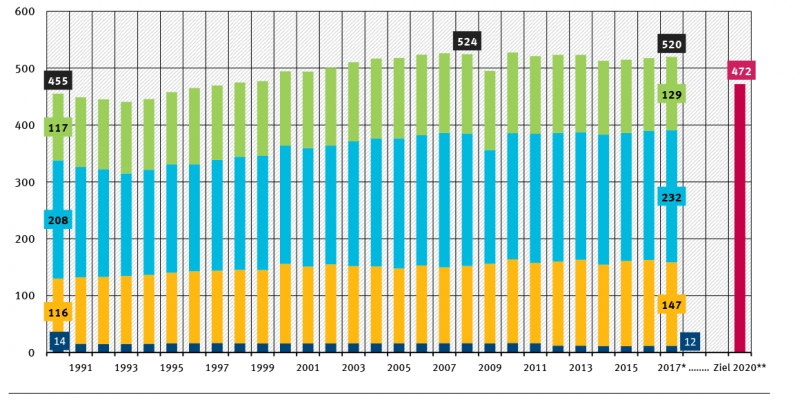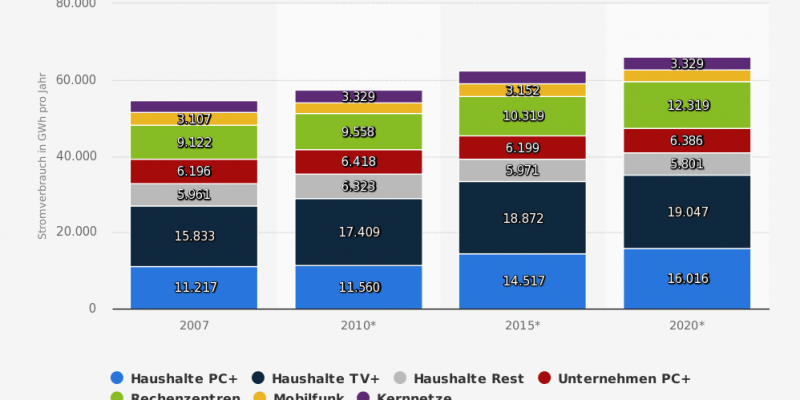Responsibilty of ICT
Not only codes themselves can bring this movement forward. Every industry, or every organization sweeping starts on her own doorstep. So now I want to start with Information and Comunication Technique (ICT). It will definitely go further in the topic than I try to sketch in this blog post. But for the beginning I would like to only once for the classification into the causes and factors of the entire crisis.
Why is ICT involved?
Justified or not, the question can be raised as to whether and why ICT is even playing its part in the climate crisis.
After all, neither our servers nor our machines have an exhaust through which they emit carbon dioxide. Or do they, isn't it?
It is the electricity that is responsible for our share in the crisis. Every CPU, every interaction requires power for the arithmetic operation
and the cooling of the chip. This electricity comes from the national socket. But this is where the crux begins.
As each country has its own electricity mix, the proportion of electricity generated in production by the combustion of fossil fuels is is generated differently. In addition, these shares fluctuate depending on the degree of production of the power plants and the weather situation, to which renewable energy sources are exposed. are exposed to energies.
Based on the graph, I would like to estimate the power consumption for the entire Internet and communication industry at 60TWh for Germany. Now this number does not bring us if we cannot classify it.

If one now considers the 60TWh in the context of national electricity consumption, one has to note that ICT is a little bit more than 11% of electricity consumption goes out. But now electricity is not the only source of energy in Germany.

Electricity production is only one part of the overall energy economy - about 1/5 of it. If this is the case, then energy consumption of German ICT makes only roughly 2% of overall german energy consumption.
2% is easy
This number appears relatively small at first glance. So small that you could say "You don't have to do anything here". But if we look at the 60TWh taking into account the carbon monoxide factor in the first figure, the emission is 23.5 million t carbon dioxide per anno. This is definitely not zero. But that's where we have to go.
What to do?
What can we do to reduce this amount of carbon dioxide emissions to zero? Well, there are several starting points that I would like to mention here:
- – Working remote or come together in one place?
- – Hoster/Cloud Provider Selection, which one do you trust for renewable energy plan?
- – Energy Provider Selection of your Company or Home Office?
- – Application running on bare metal or in a containerized environment?
- – Do I need a complete CI run for each single commit?
- – Does a user really needs every byte of content we deliver on a website?
- – Why is my mobile device getting that hot, when using it for routing?
In addition to the things we can tackle in everyday developer life, there are also tasks that digitize for is holding us in readiness. Digitalization also offers opportunities in the climate crisis to take steps in the right direction. But are all the areas that are to be solved by digitization at the same time climate-friendly? Can we achieve this through artificial intelligence we solve problems or create gaps in the energy supply that we actually wanted to close. These are topics for more than one article. They are also topics that we would like to discuss together with the scientists. The goal should be to be here to educate and create options for action.
Is that all?
Of course, this isn't the end of it. It won't do any good, if we have set all computing power in the network to 100% renewable, but
the user himself uses the application with end devices that are charged with 50-70% coal electricity, for example. In addition, digitalization carries the danger that
we may be working something off by progress. But the climate effect then fizzles out because of increasing consumption. One only has to look at the development in the
watch streaming.
So it remains: there is still a lot to do, a lot to work out. If you have any constructive input, please feel free to send us an email or chat with us.
to address.


